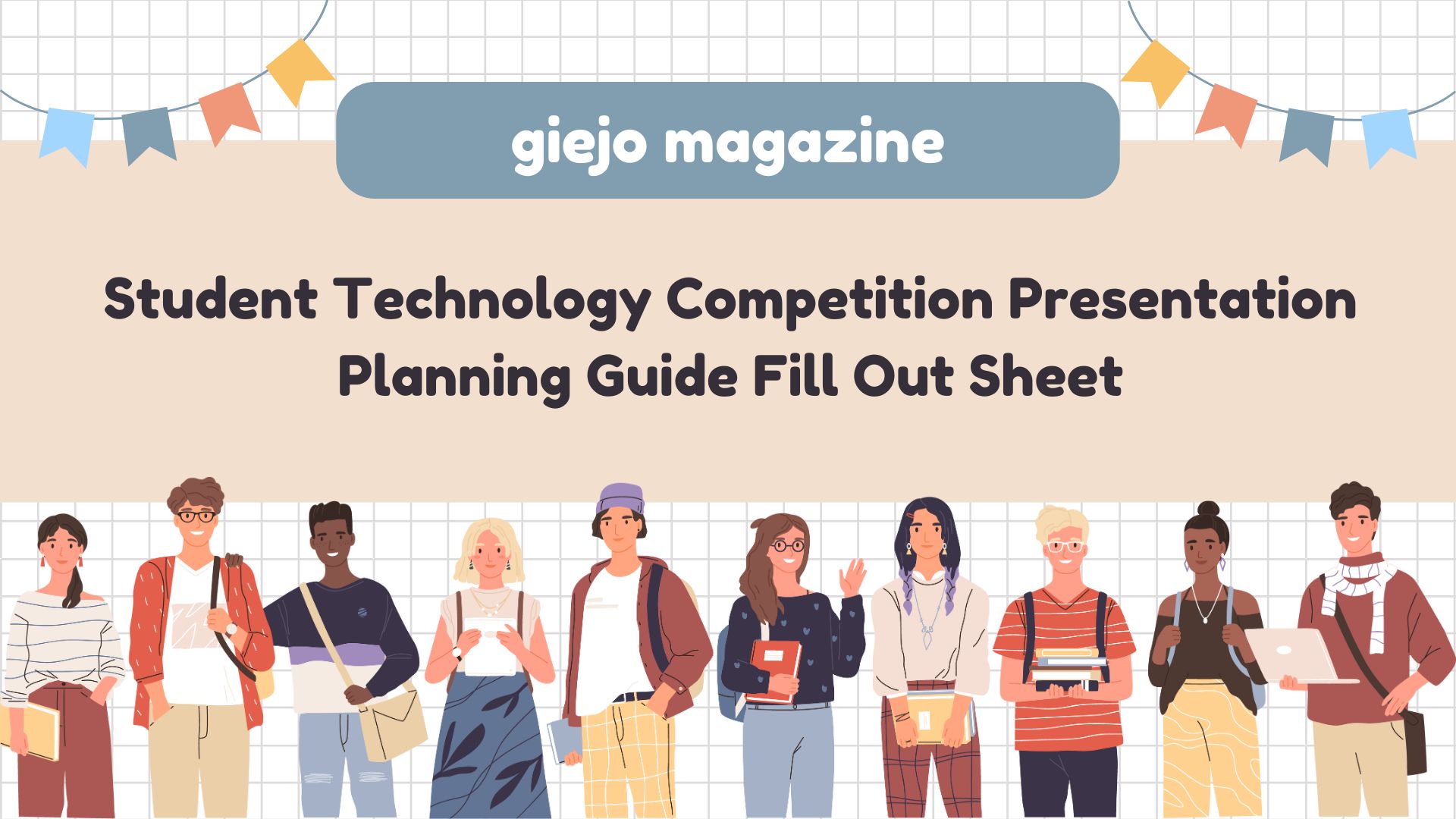Student Technology Competition Presentation Planning Guide Fill Out Sheet
In today’s fast-paced educational environment, student technology competitions are becoming a prominent way for young innovators to showcase their skills. Whether you’re participating in a local science fair, a global robotics competition, or a tech startup pitch event, your ability to plan and deliver a compelling presentation can be the key to success. To help you organize your ideas and stand out in the crowd, we’ve created this comprehensive Student Technology Competition Presentation Planning Guide, including a fill-out sheet to make the process as smooth and efficient as possible.
Why Presentation Planning Matters in Student Technology Competitions
A well-planned presentation is crucial to communicating your ideas clearly and engaging your audience. In a competition setting, judges often have limited time to evaluate numerous projects. An effective presentation allows them to grasp the essence of your project quickly and understand its innovation, impact, and feasibility. Planning ensures that you convey your ideas with confidence and precision.
This guide is designed to help you break down your presentation into manageable steps, providing clarity on what needs to be included and how to organize it effectively.
Step 1: Understand the Competition Criteria
Before you start planning your presentation, it’s essential to understand the specific requirements of the competition. Here are some key elements to consider:
- Topic and Scope: What is the competition focused on? Is there a specific theme or challenge you need to address?
- Judging Criteria: Are judges looking for technical proficiency, creativity, feasibility, or social impact?
- Time Constraints: How much time do you have for your presentation? Tailor your content to fit within the allotted time.
Tip: Review any official competition guidelines carefully to ensure you don’t miss important details.
Step 2: Structure Your Presentation
Organizing your content logically will make your presentation flow more naturally and help you communicate more effectively. Consider the following structure:
- Introduction (1-2 minutes)
Introduce yourself, your team (if applicable), and give a brief overview of your project. Explain the problem you are solving or the innovation you are presenting. - Problem Statement (2-3 minutes)
Clearly define the problem your project addresses. Why is it important? Who will benefit from your solution? Use data and real-world examples if possible. - Solution Overview (4-5 minutes)
Explain your technology or solution. How does it work? What makes it unique or innovative? Highlight any technical features or design elements that set your project apart. - Impact and Feasibility (2-3 minutes)
Discuss the potential impact of your solution. How scalable is it? Will it have long-term benefits for your target audience? What challenges did you face during development, and how did you overcome them? - Conclusion (1-2 minutes)
Summarize the key points of your presentation and provide a call to action. Leave the judges with a memorable takeaway.
Step 3: Fill-Out the Planning Sheet
To make your preparation process more organized, we’ve provided a fill-out sheet below. This will help you brainstorm, organize your thoughts, and ensure that you cover all the necessary components of your presentation.
| Section | Details to Fill Out |
|---|---|
| Project Title | What is the name of your project? |
| Your Name and Team | Include the names of all participants, if applicable. |
| Problem Statement | What problem are you solving? Why is it important? Provide statistics or data, if available. |
| Technology/Innovation | What technology or innovation are you presenting? Provide details about how it works and why it’s unique. |
| Impact & Feasibility | Describe the potential impact of your solution. How feasible is it? Address any challenges encountered during development and how you solved them. |
| Competition Criteria | What are the judging criteria for this competition? Ensure you know what judges will be focusing on. |
| Visuals and Demos | What visuals or demonstrations will you include (e.g., slides, prototypes, videos)? |
| Conclusion | How will you conclude your presentation? What is your key takeaway? |
| Q&A Preparation | Anticipate questions judges might ask and prepare concise, thoughtful answers. |
Step 4: Design Effective Visuals
In addition to verbal communication, visuals can play a critical role in making your presentation memorable. Here are some tips for designing effective visuals:
- Keep it simple: Avoid overcrowding slides with text. Use bullet points, images, and diagrams to convey complex ideas.
- Be consistent: Use a uniform font, color scheme, and style throughout your presentation.
- Focus on clarity: Each visual should support the message you’re trying to communicate. Don’t include anything that doesn’t add value.
- Practice with your visuals: Make sure your slides or demos work smoothly with your spoken words. Timing and coordination are key.
Step 5: Rehearse and Refine
Once your presentation is planned, it’s time to practice. Rehearse multiple times, both alone and in front of a test audience, such as friends, family, or peers. This will help you refine your delivery and identify areas for improvement.
- Time your presentation: Make sure you stay within the competition’s time limits.
- Seek feedback: After rehearsing, ask others for constructive criticism and use it to enhance your presentation.
Step 6: Stay Calm and Confident
On the day of the competition, remember that preparation is the key to success. Stay calm, breathe deeply, and trust in the hard work you’ve put into your project and presentation. A confident presentation, paired with a well-organized plan, will leave a positive impression on the judges.
Final Thoughts
Whether you’re presenting a new app, a robot, or a tech-driven solution, careful planning is essential to succeeding in a student technology competition. By following this Student Technology Competition Presentation Planning Guide and filling out the provided sheet, you’ll be well on your way to delivering a compelling and confident presentation. Remember, the more you prepare, the more confident you’ll feel when it’s time to present. Good luck!
